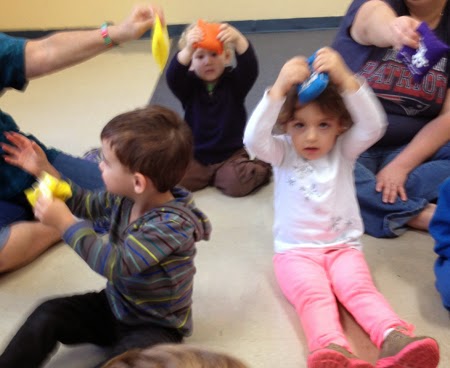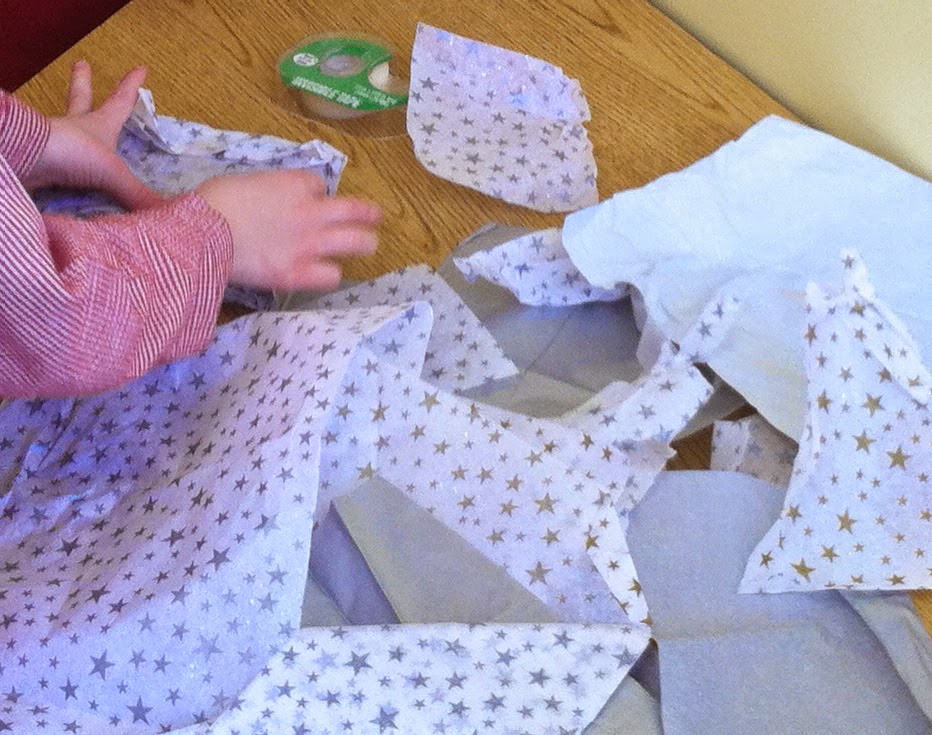Take 5 activities are basically one simple activity for parents to do with their children in the childcare setting that take just five minutes. These activities are a modification of what the children have been doing with the caregiver during the day and serve to engage parents and extend the learning.
A tremendous amount of resistance was reported back to our office. Providers said the parents wouldn't come in and do things with their kids. We heard things like "My parents don't have time for this," and "My parents told me that they pay me to take care of their kids and I shouldn't be giving them homework." Other providers have said these same parents are often the ones wondering what the providers were doing to prepare their children for school.
For my post today, I've included the Take 5 Activity Instructions given to the providers and two sample activities. I still believe this is an appropriate and effective way to engage parents in the learning process and is a stepping stone to homework activities that will be part of a family's "big school" experience. Perhaps some of you reading this blog will be able to implement Take 5 activities in your preschool programs and school programs can utilize the concept to begin the bridge of learning from school to home.
Take 5 Activity Instructions (given to providers)
Rationale:
Parent engagement is an important feature of high quality childcare programs and children's success in school. These "Take 5" activities are designed to engage parents (or guardians) through learning activities that you have been doing with the children. They will support parents in being active partners in their children's education process.
Materials for each Take 5 activity: (each provider was given these materials)
- 1 laminated sign for your parent information board (entry door, sign in sheet area, etc.)
- 1 instruction sheet for parents/guardians
- Data collection sheet(s)
- Reporting form
- Information sheet for parents
How it Works:
Do the activate for the Take 5 with the children in advance.
Leave the materials for the activity out in the appropriate play space so that parents can easily access it.
Post the Take 5 sign where parents can see it as they drop off or pick up children.
Encourage parents to take five minutes and complete the activity and data collection sheet with their child(ten).
If parents are not used to learning through play with their children or they have very young children, you may need to be nearby and available to provide support.
Make notes on the Take 5 reporting form.
TAKE 5
ACTIVITY
Innovative Measuring –
Explore different ways to measure how tall you and your child are in our math
center! Please make notes on the data recording sheet for our discussion times.
What you see above is the "laminated sign." An instruction sheet, measuring materials, and the data recording sheet were to be displayed for parents. Parents could then use a ruler or pencil or crayon or hand to measure themselves, objects in the room, or their child. They were asked to write down the date, what they learned, and sign it. Example:
Sue Smith 1/15/15 child is 36" tall; 16 pencils tall; 25 hands high; my foot is 1 pencil long; Tim's foot is 1/2 a pencil long
TAKE 5 ACTIVITY
I Spy. Play a game of I Spy with My Little Eye with your little one.
Locate an object in the room such as a red ball, and say, “I Spy with my little eye something that bounces. I spy something that bounces and is red.” Let your child guess. Take turns letting your child choose an item and you guess. Ask your family child care provider for support if you need to make the activity easier for infants.
Please sign the sheet noting your participation!
The data collection sheet in this case would simple show the parent's name, date, and items "spied."
Example: Mary Turner 1/14/15 red ball, purple dinosaur, yellow curtains.
Sing a Song Together – Choose
one of the three songs to sing and play with your child. Remember to do the
motions as you sing!
Notecards with song lyrics and hand motions were made available to the parents. Additional cards were available if parents wished to take the activity home with them to do later. If parents were not familiar with the song or motions, caregivers were available to demonstrate. Parents were asked to write down the date, what song they sang, and sign it.
Example: Paul Rogers 1/16/15 Itsy Bitsy Spider
I look forward to hearing how you engage parents in the learning process as well as whether or not you made the Take 5 concept work for you!


























